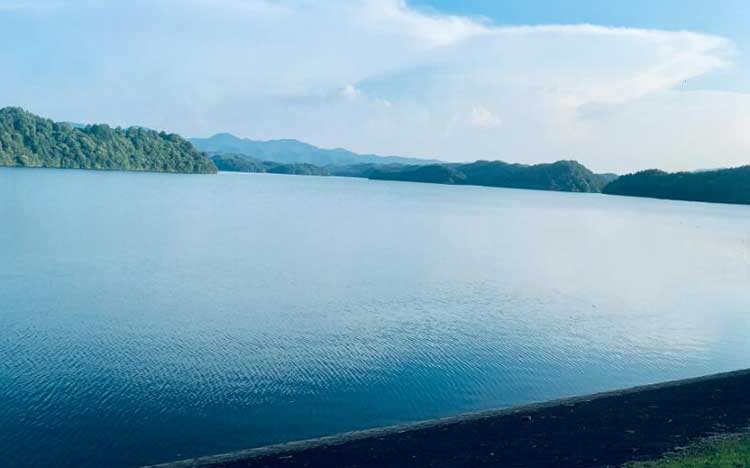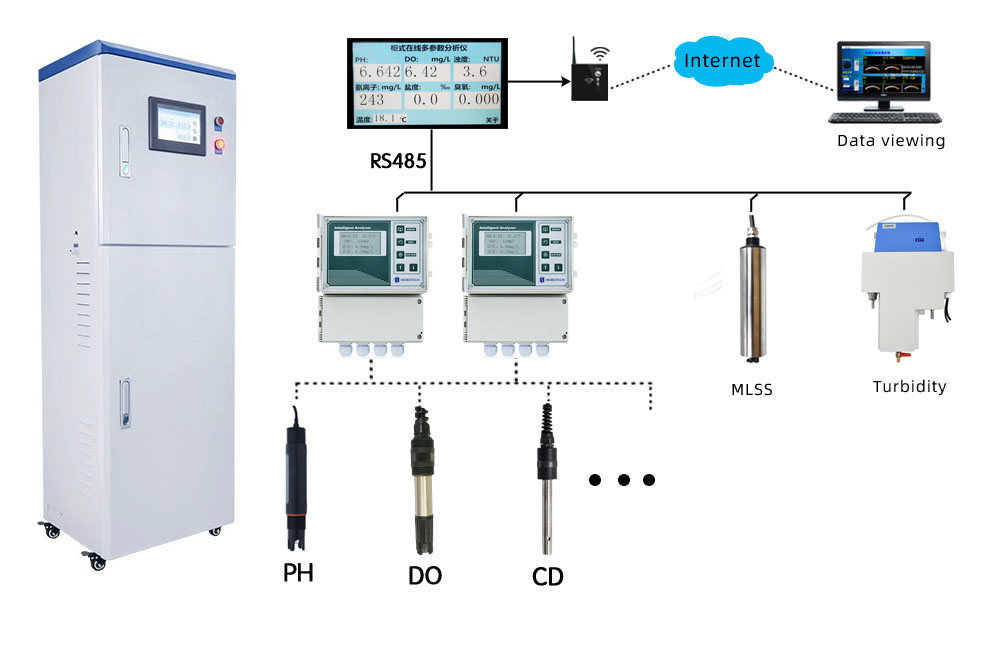Solution of drinking water source monitoring
※ Monitoring demand for drinking water source
Drinking water is an important resource for human life. At present, the ecological environment is seriously damaged and water pollution is serious. The protection and treatment of drinking water sources have become one of the most concerned issues in modern society. The main pollution types of drinking water sources can be summarized as follows: physical pollution, organic pollution, bacterial and microbial pollution, eutrophication pollution, acid-base and inorganic salt pollution, toxic substance pollution, oil pollution, radioactive pollution, endocrine disruptors and secondary pollution of pipe network. The polluted drinking water source and its components are quite complex, generally there are colloidal particles, inorganic ions, individual algae, dissolved organic matter, insoluble organic matter, etc. at the same time. These pollutants interact and influence each other to form a compound pollution to the water source. With the increasing pollution of water resources, the composition of water samples is becoming more and more complex, and more and more water quality items are tested. Conventional laboratory sampling and testing technology has been unable to obtain accurate information on water pollution at the first time.

※ Parameter selection
Fortunately, water pollution does not appear suddenly and inexplicably, and most of it does not occur alone. We can conduct online real-time monitoring on some comprehensive indicators of water quality, so as to catch the signs of water pollution events, take corresponding measures for the upcoming water pollution events, and minimize the harm.
1. Turbidity: Turbidity refers to the degree to which suspended solids in water hinder light transmission. When the water contains suspended substances such as sediment, clay, organic matter, inorganic matter, plankton and microorganism, the light can be scattered or absorbed, and the turbidity is large. Turbidity of the water is not only related to content of the particles in water, but also closely related to particle size, shape and light scattering characteristics of the particle surface. Generally, the level of turbidity does not directly indicate the pollution degree of water quality, but the increase of turbidity indicates the deterioration of water quality.
2. PH value: PH represents the most basic property of water. It can control the dissociation degree of weak acids and bases in water, reduce the toxicity of chlorides, ammonia, hydrogen sulfide, etc., and prevent the release of heavy metals in sediment. It has influence on the change of water quality, growth and decline of biological reproduction, corrosivity, water treatment effect, etc. It is an important parameter for uating water quality. The PH value of natural water is mostly in the range of 6-9; The drinking water is between 6.5 and 8.5.
3. Conductivity: the conductivity of water is related to the amount of inorganic acid, alkali and salt it contains. This indicator is often used to estimate the total concentration or salt content of ions in water.
4. Dissolved oxygen: the content of dissolved oxygen in water is related to atmospheric pressure, water temperature, salt content and other factors. The decrease of atmospheric pressure, the rise of water temperature and the increase of salt content will lead to the decrease of dissolved oxygen content. For generally clean rivers, DO can approach the saturation value of its temperature. When there are a large number of algae, dissolved oxygen may be supersaturated; When the water body is polluted by organic substances and inorganic reducing substances, the content of dissolved oxygen will be reduced, or even zero. At this time, anaerobic bacteria are active and the water quality will deteriorate. When the dissolved oxygen in the water is less than 3~4 mg/L, many fish have difficulty breathing and die of suffocation.

※ System overview
The monitoring system includes data acquisition, data analysis and data processing.
The data acquisition can be composed of traditional analog sensors with our detection instruments or digital sensors developed by our company.
The analysis system makes a comprehensive judgment on the collected data to analyze the water quality changes, water quality risk assessment and possible pollution sources.
The data processing part generates data curves for the collected data, saves the original data and analysis results, uploads alerts, and provides historical queries.
※ Performance characteristics
The system can monitor conductivity, PH, dissolved oxygen, turbidity, temperature, flow and other water quality parameters in real time, and transmit the real-time water quality parameters of monitoring points to the monitoring station through RS485 bus.
The monitoring station conducts data collection, alarm data query, statistics and analysis on the data of each monitoring point, and generates reports and trend curves.
The monitoring station can provide the command center with functional interfaces such as data query, automatic upload, automatic alarm, change of data acquisition frequency and data storage interval.